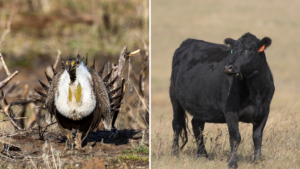February 2, 2010
The desert tortoises (Gopherus agassizii) are truly remarkable animals that have evolved to survive in some of the harshest natural environments on the Earth’s surface – the deserts of the American southwest.
Desert tortoises have unique behavioral and physiological adaptations that have helped secure their survival in the harsh conditions of the Mojave and Sonoran deserts. For example, desert tortoises survive the extreme annual and diurnal temperature fluctuations of the deserts by spending 95% or more of their lives inside coversites and burrows which provide a cooler microclimate when the weather is hot and that, conversely, provide shelter from freezing temperatures during the winter. They are herbivorous and eat a variety of plant matter as it becomes seasonally available including fresh spring and summer annuals, dried annuals, and grasses. Desert tortoises have evolved an ability to digest many species of plants that are indigestible to other animals with the help of bacteria that reside in their digestive systems. As yet another example of their adaptations, desert tortoises have adapted to the extreme aridity of the southwestern deserts by developing a high tolerance for dehydration, and have been known to go over a year without drinking any water at all.
Sadly, and ominously insofar as the continued survival of the desert tortoise is concerned, one thing that the tortoise has not evolved to do is to co-exist with human activities and development. There is ample evidence that livestock grazing, urbanization, mining, off-road vehicle use, and other human-caused disturbances to the tortoise’s natural habitat threatens the continued survival of desert tortoises as a species throughout their range.
This case deals with desert tortoises found south and east of the Colorado River – the Sonoran population of desert tortoises which find their natural habitat range in the Sonoran Desert and the Black Mountains population of desert tortoises found north of Kingman, Arizona. south and east of the Colorado River. While the Mojave population of desert tortoises (which inhabit the Mojave Desert to the north and west of the Colorado River) received the protections of the Endangered Species Act (“ESA”) when it was listed as a threatened species in April of 1990, the Sonoran population has not been accorded that same protection.
Since 1987, monitored populations of Sonoran desert tortoise adults and subadults have declined by 51%, largely as a result of the anthropogenic causes discussed above.
In an effort to reverse this trend towards extinction, and in an effort to secure the protections of the ESA for the Sonoran population of desert tortoises, Plaintiffs WildEarth Guardians and Western Watersheds Project (collectively “WildEarth Guardians”) bring this action against Defendant Ken Salazar, Secretary of the United States Department of the Interior to compel him to carry out his non-discretionary duties under Section 4 of the ESA.1 16 U.S.C. §1533.
The Secretary has failed to comply with his mandatory duty under ESA Section 4 to make a “12-month finding” on WildEarth Guardians’ Petition to list the Sonoran desert tortoise as an endangered or threatened species under the ESA and to designate its critical habitat. This lawsuit seeks to force the Secretary to make the overdue finding on Guardians’ Petition.






